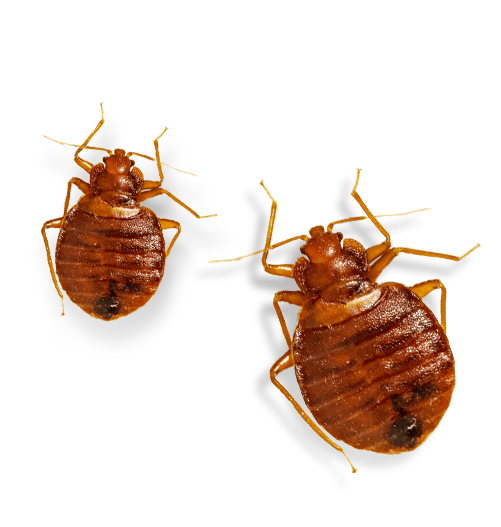Reliable A1 Bed Bug Treatment Houston - Get Rid of Bed Bugs
Reliable A1 Bed Bug Treatment Houston - Get Rid of Bed Bugs
Blog Article
Understanding the Lifecycle of Insects for Targeted Control Techniques
Recognizing the lifecycle of bugs is a basic facet of reliable parasite monitoring methods. By understanding the numerous stages of development that insects undergo, a much more precise and targeted strategy can be taken on to regulate their populations. This knowledge not just clarifies the susceptabilities within the pest lifecycle however additionally paves the way for executing tactical steps that can interrupt their growth and reproduction cycles. Through a much deeper understanding of how pests thrive and develop, customized control strategies can be made to deal with specific factors in their lifecycle, eventually causing more successful bug monitoring end results.
Value of Understanding Insect Lifecycle
Comprehending the lifecycle of pests is vital for developing effective and targeted control techniques in bug administration. By understanding the numerous stages a pest goes through from egg to adult, bug control professionals can identify prone points in the lifecycle where treatment can be most successful.
Furthermore, acknowledging the details ecological conditions necessary for each and every stage of the insect's lifecycle can assist decisions on habitat alteration or exclusion approaches to reduce and disrupt the lifecycle bug populations. This expertise makes it possible for pest monitoring professionals to execute aggressive steps instead of relying entirely on reactive therapies, leading to more long-term and lasting parasite control solutions. Ultimately, a detailed understanding of insect lifecycles empowers bug control practitioners to tailor their techniques successfully, maximizing and reducing ecological impacts control results.
Secret Stages in Bug Growth
To efficiently execute targeted control approaches in insect monitoring, a critical element hinges on comprehensively determining and understanding the essential stages in pest development. Bug advancement usually consists of a number of vital stages that are critical for their lifecycle and monitoring. The initial stage is the egg stage, where pests lay eggs that later on hatch out right into larvae. Larvae after that progress into pupae, a phase where they go through transformation before becoming grown-up insects. Comprehending these stages is essential as it helps in identifying weak spots in the lifecycle where control actions can be most reliable.

Vulnerabilities in Insect Lifecycle
Throughout the various phases of a bug's lifecycle, distinctive susceptabilities arise that can be tactically targeted for efficient control procedures. One crucial vulnerability depends on the egg stage, where pests are commonly much more vulnerable to specific insecticides or biological control representatives as a result of their soft external covering, making them easier targets for treatment. Furthermore, the nymph or larval stage presents vulnerabilities as parasites go through rapid growth and development, requiring high energy consumption that can be exploited by interrupting their food resources or introducing development preventions. Pupal stages, identified by immobility and improvement, offer a window for targeted control with physical barriers or details therapies that hinder successful introduction. Grown-up insects, while a lot more resistant due to their reproductive ability, can still be susceptible throughout mating or egg-laying activities, which can be interfered with with scent catches or sterilization techniques. Comprehending these susceptabilities in the pest lifecycle is crucial for creating efficient and exact control methods that successfully handle bug populaces while decreasing ecological influence.
Carrying Out Targeted Control Steps
.jpg)
Carrying out targeted control actions generally entails a multi-faceted strategy. This may include habitat modification to make the setting much less congenial to pests, such as eliminating standing water for mosquito control or securing entrance factors for rodents. In addition, organic control methods can be made use of, where all-natural killers or pathogens are introduced to keep pest populations in check.
Integrated Pest Management (IPM) strategies that integrate different control measures in a coordinated and sustainable fashion are commonly the most efficient in achieving long-term parasite management objectives. By executing targeted control procedures based on a detailed understanding of pest lifecycles, insect populations can be effectively regulated while reducing threats to human health and wellness and the setting.
Enhanced Bug Monitoring Practices

Additionally, the unification of biological control agents, such as all-natural predators or virus of parasites, can help in reducing dependence on chemical pesticides and advertise an extra balanced ecological community. Applying physical A1 Bed Bug treatment houston barriers and catches can also be component of enhanced bug monitoring techniques, using safe and targeted solutions for parasite control. Furthermore, making use of scents and other semiochemicals can interfere with pest mating patterns and interaction, resulting in lowered pest populaces with time.
Conclusion
By determining key phases in bug advancement and susceptabilities in their lifecycle, targeted control measures can be executed to decrease parasite populations. Enhanced bug administration methods can help lower the reliance on broad-spectrum chemicals and advertise more ecologically pleasant and lasting parasite control methods.
Recognizing the lifecycle of bugs is crucial for developing reliable and targeted control approaches in pest management. By understanding the various stages a bug goes through from egg to adult, bug control specialists can identify prone points in the lifecycle where treatment can be most effective. Eventually, a thorough understanding of pest lifecycles empowers parasite control professionals to customize their strategies properly, minimizing ecological effects and optimizing control outcomes.
By executing targeted control actions based on a detailed understanding of bug lifecycles, pest populaces can be effectively controlled while reducing dangers to human health and wellness and the atmosphere.
By determining essential stages in insect growth and vulnerabilities in their lifecycle, targeted control measures can be carried out to minimize parasite populations.
Report this page